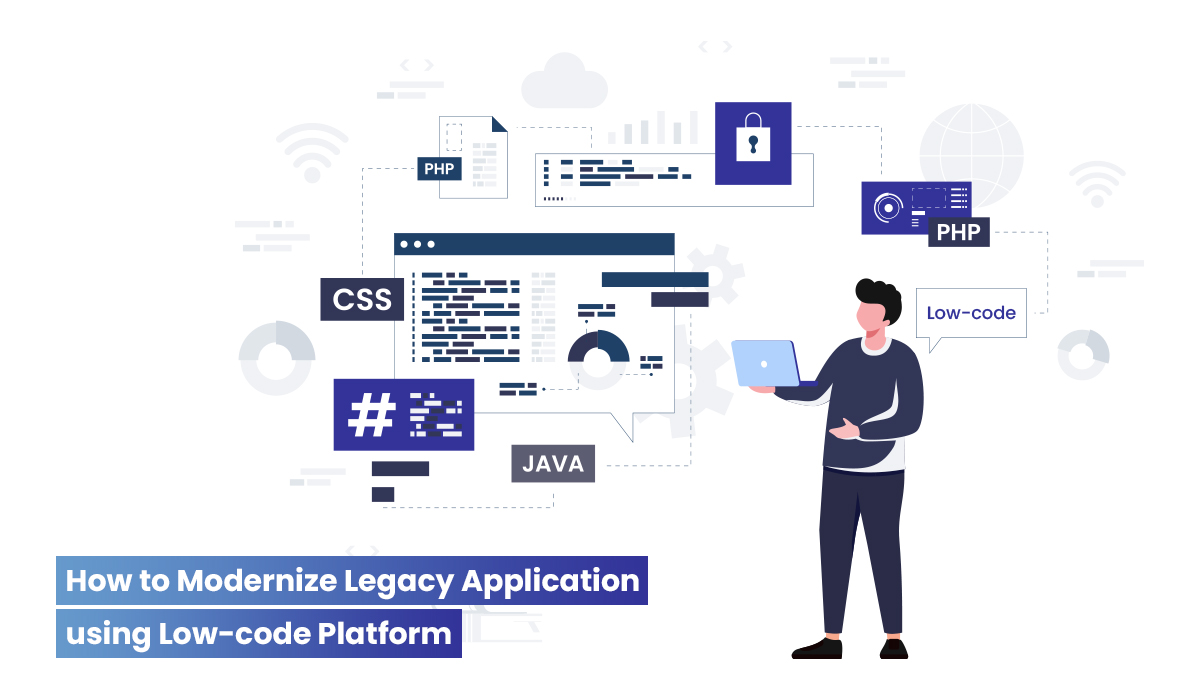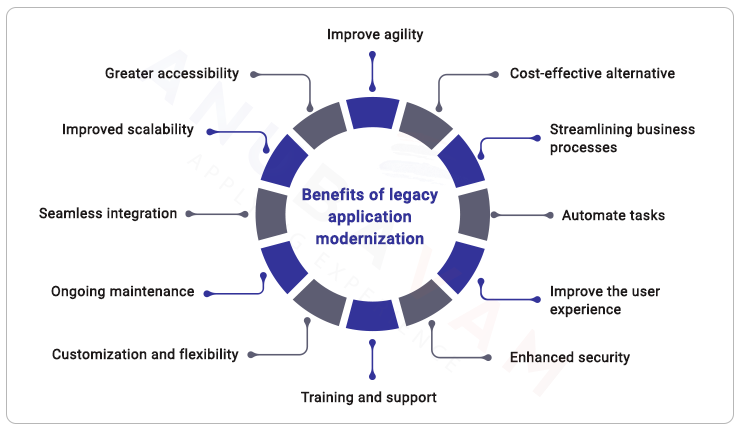A Guide to Modernizing Legacy applications with Low-Code and No-Code Platforms

Modernizing Legacy applications continue to be a barrier in the way of the digital transformation of many organizations. Without clarity or a hurried discovery phase, most of the legacy system modernization projects fall short of completion. The inability to update legacy systems can hinder an organization, yes!
According to one study, maintaining legacy systems in a bank can consume 78% of the IT budget, and 70% of respondents indicated that these systems are a change-related bottleneck. A larger percentage of CIOs say they spend 40–60% of their time managing legacy systems, which is a barrier to more strategic initiatives.
Do not fret, we have examined what constitutes a legacy system, the idea of modernizing legacy applications, and the step-by-step process on the road to success.
What are legacy applications?
Legacy systems or applications can be a significant barrier to a business's ability to expand and succeed in the future. These obsolete technologies are often rigid, hard to maintain, and expensive to adapt, all of which are drawbacks. As a result of this, a lot of companies are looking into ways to update their outdated software and make use of the most cutting-edge technology. Platforms that require little to no coding at all, or maybe none at all, are becoming an increasingly appealing choice in recent years.
What are low-code and no-code platforms?
Low-code and no-code platforms are current approaches to automating the development of new applications, generally as cloud applications. They include development tools that enable users to construct and distribute applications without writing code or having any coding knowledge. These platforms allow non-technical people to construct and modify programs using visual user interfaces and pre-built templates.

Benefits of modernizing with low-code and no-code platforms

Speed up development time: By eliminating the need to write code from scratch, low-code and no-code platforms can significantly reduce the time it takes to build and deploy new applications.
- Low-code and no-code platforms can improve agility by allowing for quick modification and updates to applications as needed.
- These platforms can reduce costs through the use of fewer technical resources and are more cost-effective than traditional development methods.
- Low-code and no-code platforms can increase efficiency by streamlining business processes and automating tasks.
- These platforms can improve the user experience by creating easy-to-use and intuitive applications.
- Enhanced security is a benefit of low-code and no-code platforms, as they often have built-in security features and can be easier to secure than custom-built applications.
- Greater accessibility is possible with low-code and no-code platforms, as they do not require coding skills, enabling more people within an organization to build and modify applications.
- Improved scalability is a characteristic of low-code and no-code platforms, making it easy to add new features and capabilities as needed.
- It is important to ensure that new applications built with low-code and no-code platforms can integrate seamlessly with existing systems and data.
- Training and support may be necessary for employees using these platforms to build and modify applications.
- Ongoing maintenance is required to ensure that low-code and no-code platforms continue to function properly and meet the needs of the business.
- Customization and flexibility should be considered when choosing a low-code or no-code platform, as certain features may need to be built from scratch.
How to get started with modernizing legacy applications' using low-code and no-code platforms - step-by-step guide.

- Figure out what your business needs: Figure out which parts of your business could use low-code or no-code platforms.
- Chose the right platform: There are many low-code and no-code platforms on the market, so it's important to research and compares different options to find the one that best fits your needs.
- Once you've chosen a platform, it's a good idea to put it to the test with a small pilot project to see how it works in the real world.
- Scale and roll out: If the pilot is successful, you can then scale and roll out the platform to other parts of your business.
- Involve key stakeholders: When you start planning your modernization efforts, it's important to include key stakeholders like business leaders, IT staff, and users who will be affected by the change. This can help make sure that the project is in line with business goals and that everyone is on board with the plan.
- Write down your goals and aims: Set clear goals for how you want to use low-code and no-code platforms. This can help you decide what to do and make sure that the platform you choose is right for your business.
- Create a roadmap: Make a plan that shows the steps you'll take to move to low-code and no-code platforms. This can help make sure the process is organized and that you can keep track of how things are going.
- Make a group: Put together a team of experts who can help plan, implement, and support the move to low-code and no-code platforms. This can include IT staff, business analysts, and any other needed resources.
- Seek guidance: Consider getting help from a third-party vendor or consulting firm that has worked with low-code and no-code platforms. They can help you figure out which platform is best for your business and help you through the whole process.
Concluding thoughts - Modernizing legacy applications with low-code no-code
Platforms that need little to no coding can be a very useful tool for businesses looking to improve their agility and efficiency while also updating older, more cumbersome computer systems. You can get started on your path to updating your legacy systems by using these platforms if you follow these steps and proceed in that order.
You will have a far better chance of beginning the process of updating your legacy systems and getting started with low-code and no-code platforms if you follow these steps and involve key stakeholders.
In general, the usage of low-code and no-code platforms can bring a number of benefits to an organization. Some of these benefits include improved scalability, increased accessibility, enhanced security, and higher productivity.
Related Articles
Legacy Application Migration to cloud SaaS platform: Challenges and Benefits
Legacy application migration is the process of moving, updating, and maintaining programs that are no longer in use. Businesses need to update any old programs they use to stay on …
Read More →Subscribe to the Creatrix Blog
Fresh insights on higher education, straight to your inbox.
We respect your privacy.
Want to contribute?
We welcome thought leaders to share ideas and write for our blog.
Become a Guest Author →
